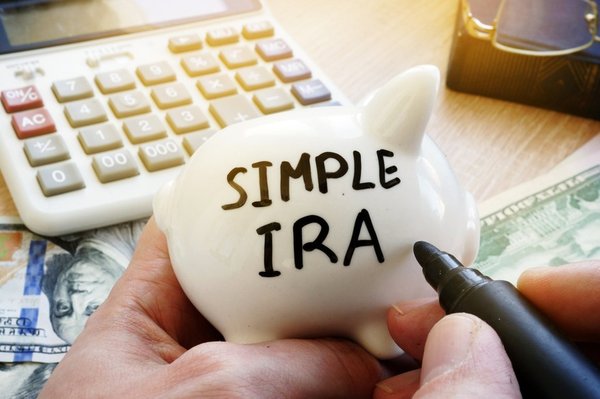A SIMPLE IRA is a retirement savings plan for employers with 100 or fewer employees. While SIMPLE IRAs are, as the name implies, pretty simple, the name is actually an acronym for Savings Incentive Match PLan for Employees. Offering one can be a cost-effective way for small business owners to give their employees a retirement savings plan without the expenses or potential limitations of a 401(k).

How a SIMPLE IRA works
At its core, a SIMPLE IRA is just like a regular IRA. It mostly follows the same rules regarding investments, distributions, and rollovers.
However, SIMPLE IRA contributions work a lot like 401(k) contributions. There are two components to funding the SIMPLE IRA: elective salary deferrals made by the employee and nonelective contributions made by the employer.
The employer contribution can take one of two forms:
- A flat 2% of the employee’s salary. The maximum salary used to determine the employer contribution is $345,000 for 2024 and $350,000 for 2025.
- Matching contributions of up to 3% of the employee’s salary, with no salary cap. (The match rate can be temporarily reduced under certain circumstances.)
Under new Secure Act 2.0 rules, though, employers with 26 to 100 workers have the option of contributing a flat 3% of workers' salaries or matching up to 4%.
A SIMPLE IRA can offer employees benefits similar to what a 401(k) offers, but in the nice low-cost package of an IRA. 401(k) plans can be costly and time-consuming to establish and administrate, while SIMPLE IRAs are relatively painless.
Pros and cons of a SIMPLE IRA
| Pros | Cons |
|---|---|
| Lower costs to establish and operate compared to a 401(k) plan. | Both the employee elective salary deferral and the maximum employer matching contribution percentage are lower than in a 401(k) plan. |
| SIMPLE IRA accounts usually let owners buy and sell any security or financial instrument they choose, with just a few limitations on risky stock options trades. | Inflexible contributions: Most employers must contribute a flat 2% up to a salary cap or provide a 3% match with no salary cap, though those with 26-100 employees can contribute a flat 3% or a 4% match. |
| Employer contributions vest immediately. | Extra penalty for rollovers and withdrawals within two years of establishing the account. |
SIMPLE IRA rules and contribution limits
As mentioned, there are two types of SIMPLE IRA contributions: elective employee contributions and nonelective employer contributions.
Employee contributions are limited to 100% of salary or $16,000 (2024) and $16,500 (2025), whichever is less, in most plans. Employees who are 50 or older can make an additional catch-up contribution of $3,500 in 2024 and 2025.
However, there are some new rules for SIMPLE IRAs under the Secure Act 2.0:
- For employers with 25 or fewer workers, employees can contribute up to $17,600 in both 2024 and 2025. Workers 50 and older are eligible to make catch-up contributions of up to $3,850, bringing their maximum contribution to $21,450.
- Employers with 26 to 100 workers are eligible for the higher limits listed above -- but only if they implement the higher employer contribution rates of a flat 3% of workers' salaries or a dollar-for-dollar 4% match.
- Beginning in 2025, workers ages 60-63 can make catch-up contributions of 150% of the standard amount, bringing the maximum SIMPLE IRA catch-up contribution to $5,250.
Contributions are made through payroll deductions and aren’t subject to income tax. They are, however, still subject to FICA and unemployment taxes.
Employee SIMPLE IRA contributions do not preclude contributions to other employer-sponsored retirement plans an employee may have. Contributing to a SIMPLE IRA doesn’t prevent employees from opening their own IRAs and contributing. For those who rely on a backdoor Roth IRA, however, the SIMPLE IRA account may cause problems.
How to establish a SIMPLE IRA
Employers can adopt a SIMPLE IRA plan by adopting one of the IRS’ model plans or by simply using the prototype plan available at their brokerage of choice. Then the employer must provide all eligible employees with plan details and let them know where contributions will be deposited. Finally, the employer sets up a SIMPLE IRA for each employee and fills out form 5305-S or 5305-SA, depending on whether the account is set up as a trust or custodial account. Most online brokerages will handle those details.
The deadline for establishing a SIMPLE IRA is Oct. 1 for the current tax year. If you’re a new employer established after Oct. 1, you can still set up a SIMPLE IRA “as soon as administratively feasible,” according to IRS rules.
Related retirement plans
The Motley Fool has a disclosure policy.








